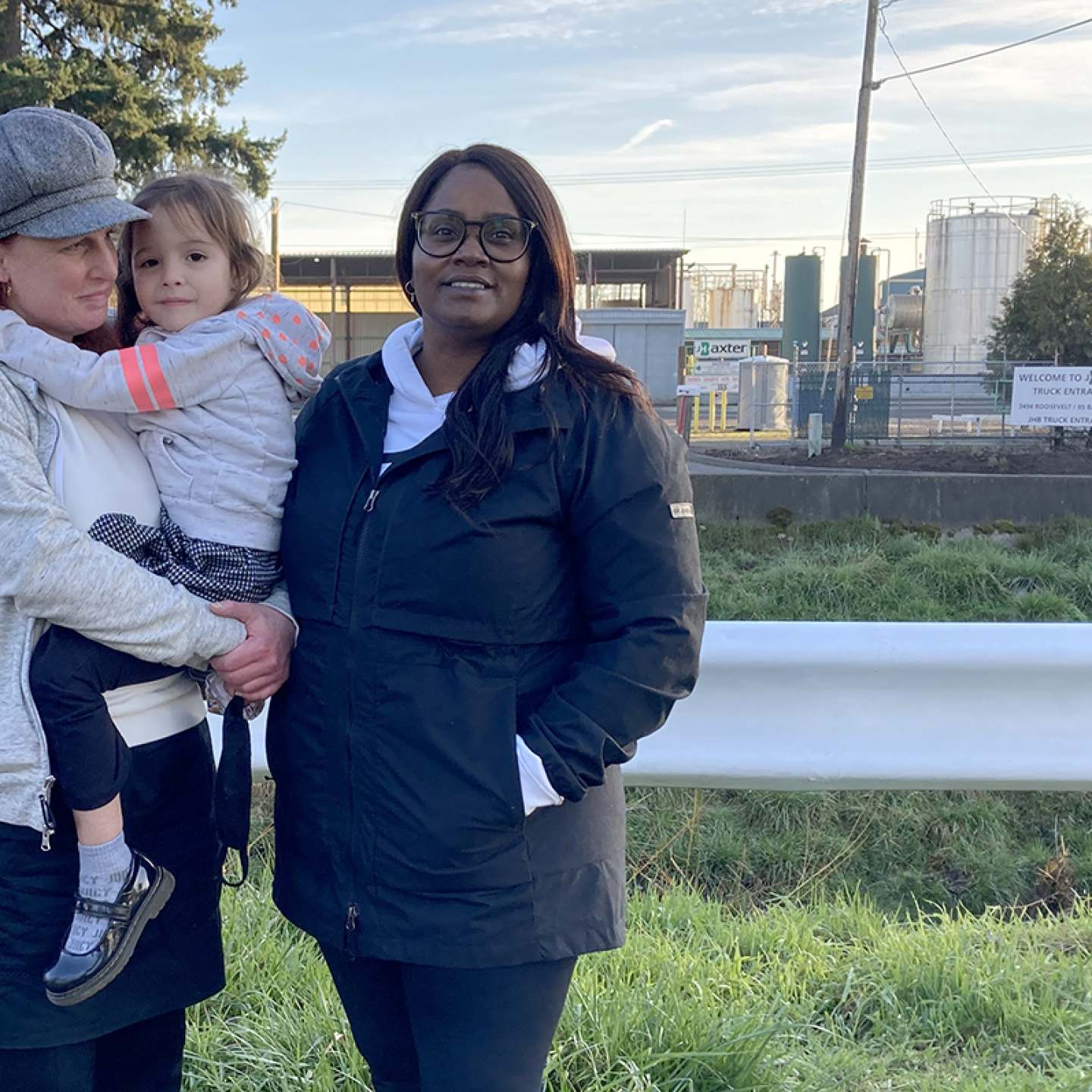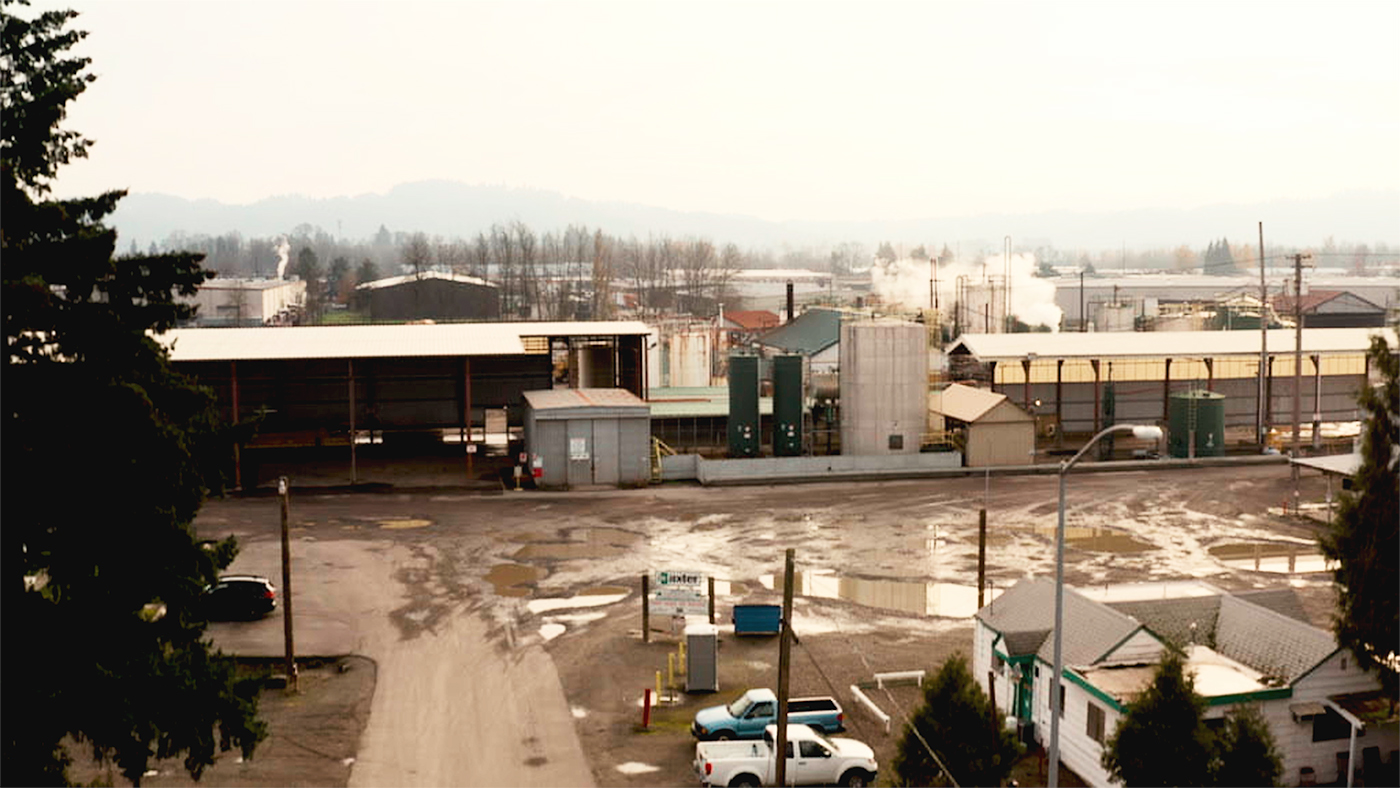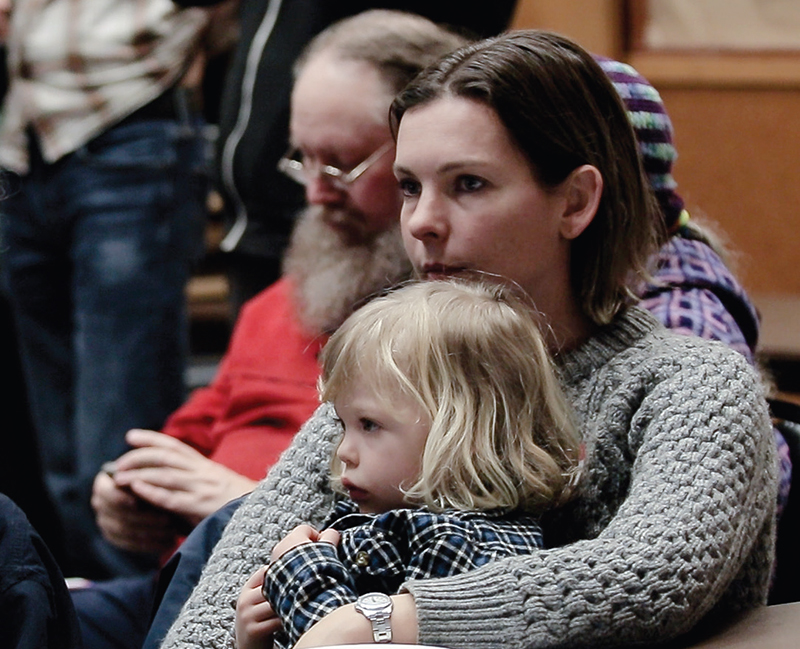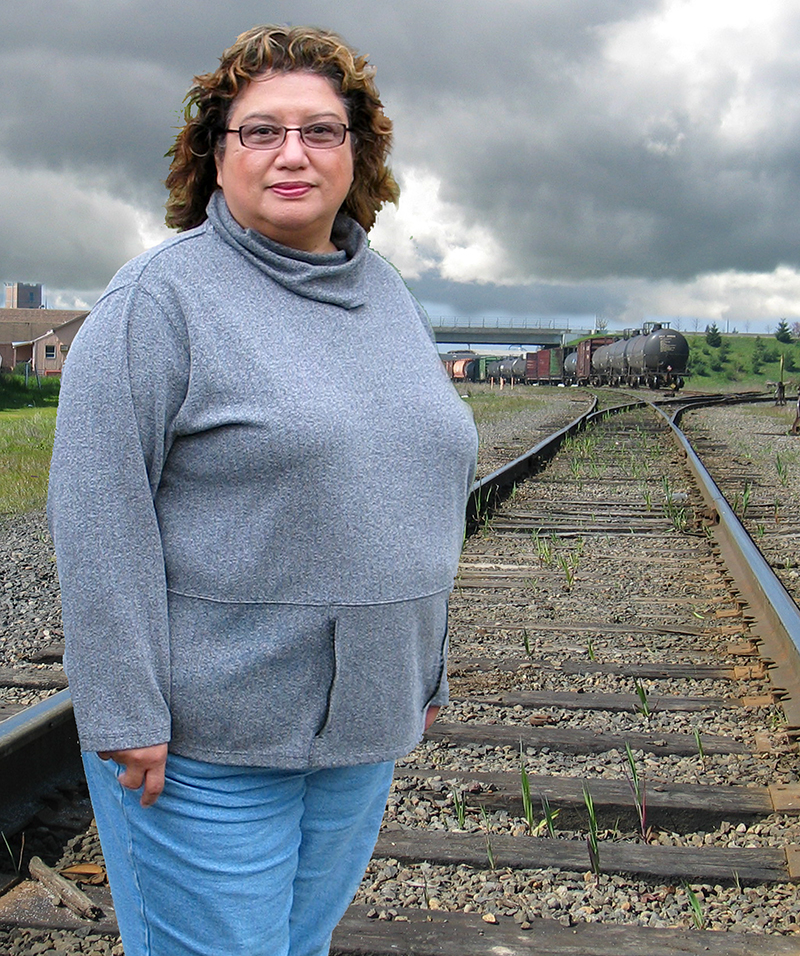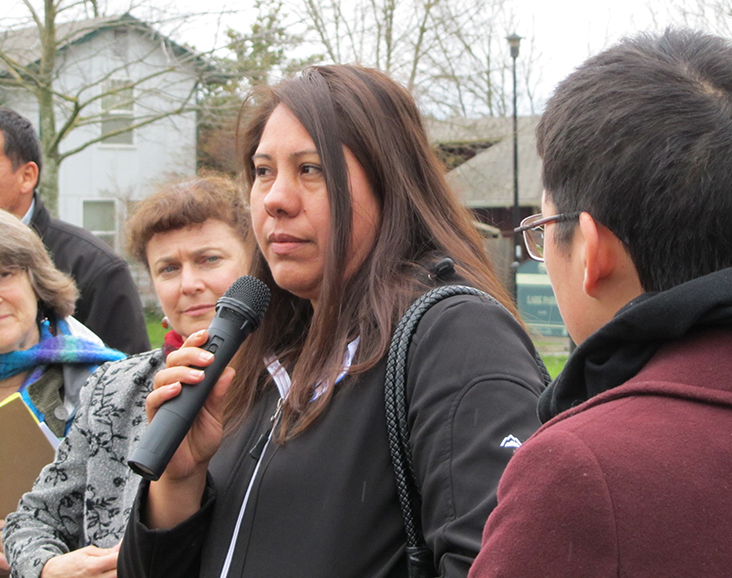This development highlights the power of grassroots action. Oregon’s new law on chlorpyrifos is stronger and more protective than the US EPA.
It’s National Public Health Week. Let’s tackle toxic chemicals!
Every child deserves a safe environment to grow in that allows them to become strong and healthy and develop to their full potential. During National Public Health Week, it's important to draw attention to the health impacts and risks from toxic chemicals in products and the places where children live, learn and play. It is now estimated that 10 million synthetic chemicals are added to the marketplace every year. They range from the chemicals in plastic toys, pesticides on our lawns and school grounds, and harmful additives in our personal care products that go directly onto our skin and are absorbed into our organs.
These chemicals can cause immediate and long-term harm. Toxic chemicals are linked to neurological damage which can leave a child with learning disabilities. Over time, chemicals can lead to a wide range of health problems from endocrine and reproductive disruption to cancer. Exposure to harmful chemicals in consumer products and the environment disproportionately impact communities of color and lower income communities that are more often exposed to cumulative toxins. It is often the case that cheaper and deadlier products are marketed to the most vulnerable members of our communities.
What is Oregon doing to address toxic chemicals?
Thankfully, there are three key bills addressing toxic chemicals this 2023 Session being led by Oregon Environmental Council and Beyond Toxics and their partners. We continue to advocate for and defend these bills from staunch opposition from the chemical and pesticide industry and demand that toxics be prioritized by our lawmakers.
This year, National Public Health Week coincides with an important deadline in Oregon’s legislative session, and thus determines what health-protective policies will, or will not, move forward. On April 4th, every bill currently being considered by the Oregon legislature must have been voted out of its first chamber committee.
What do these bills do, and what is their current status?
1) Toxic Free Schools (SB 426)
Oregon school districts and regulatory agencies currently lack funding, coordination and resources needed to implement safer pesticide use practices. As a result, unintentional yet illegal pesticide uses are occurring at Oregon schools. SB 426 will fix a 14-year unfunded mandate for schools and create a path towards modernized record keeping and safer choices for pest control under the Healthy and Safe Schools Act.
The Toxic Free Schools Act will:
SB 426 was voted out of the Senate Education Committee on March 30th and has been referred to the Joint Ways and Means Committee to address its fiscal impact.
Read more about Toxic Free Schools
2) Toxic Free Cosmetics (SB 546)
People assume personal and beauty products (collectively called “cosmetics”) are safe. But it is estimated there are over 10,000 chemicals in the beauty market today, and account for a $100 billion beauty industry. The Federal Food, Drug and Cosmetics Act (FDCA) has only restricted 11 chemicals since 1938, while the European Union has banned over 1800 chemicals.
Through SB 546, Oregon can require the public disclosure of all chemical ingredients on a company’s product webpage. Doing so is an accessible way for consumers to make educated purchasing decisions. Additionally, it will ban the sale of the worst chemicals in cosmetics and personal care products like many other states have.
SB 546 passed out of the Senate Energy and Environment Committee on March 28th, unanimously and bipartisan, and has been referred to the Joint Ways and Means Committee to address its fiscal impact.
Read more about Toxic Free Cosmetics.

Photo courtesy of Tanaphong Toochinda
3) Toxic Free Kids Modernization Act (HB 3043)
Thousands of chemicals lurk in products our kids use every day, and children are far more vulnerable to toxic chemicals than adults. HB 3043 builds on the success of Oregon’s 2015 Toxic Free Kids Act by strengthening protections for children’s health and streamlining business reporting requirements.
A modernized Toxic Free Kids Act will:
HB 3043 passed out of the House Committee on Climate and Energy on March 15th, also unanimously and bipartisan, and subsequently passed the full House 42-14 also on a bipartisan vote, on March 22nd. It heads to the Senate Energy and Environment Committee as its second chamber.
What Can you do?
In your day-to-day life, keep in mind ways that you can buy toxics-free or organic items to reduce your risk of chemical and pesticide exposure. When possible, consider reducing your use of cosmetics or products if you’re sensitive to chemicals. Be sure to wash hands and remove your shoes after playing on school fields.
In addition, contact legislators and urge them to act NOW to regulate toxic chemicals and protect public health for Oregonians. Let them know we are depending on them to help keep our families safe from harmful chemicals and pesticides at home and at school.
Authors:
Jamie Pang, Environmental Health Program Director, Oregon Environmental Council
Lisa Arkin, Executive Director, Beyond Toxics
Victory for Clean Energy
NW Natural Withdraws its Hydrogen-Fracked Gas Blending Project in Eugene

What does it really take to fight for non-polluting and equitable energy choices while calling out greenwashing and false solutions? Beyond Toxics made a decision to step forward to halt an ill-conceived energy project put forward by NW Natural, a corporation that makes its profits by promoting the sale and use of fracked methane gas. Our decision aligns with our environmental justice values, specifically supporting community health and fair treatment.
This October, Beyond Toxics joined with other organizations to intervene in a proposal by NW (Not-so-very) Natural to stop a $10 million project to build an experimental hydrogen-blending facility in West Eugene. Our intervenor status was approved by the Oregon Public Utilities Commission, which would need to approve NWN’s project before any proposal could proceed.
On November 1st, mere weeks after our team intervened in NW Natural’s application, the corporation formally withdrew its application. The cancellation of the methane-hydrogen blending project in West Eugene is a clear victory for community organizing! We were able to see this experimental project for what it was - greenwashing and the continuation of climate-destabilizing fossil fuel infrastructure.
It was important we took immediate action to block NW Natural’s predatory plan to use the Bethel neighborhood for the experimental project. As climate justice advocates, we want to share the facts about why hydrogen is the wrong choice for the Bethel neighborhood, and for Oregon!
The project objective was to send methane-hydrogen blended fuel into 2,273 residences in the Bethel neighborhood in West Eugene, a working class neighborhood. However, Bethel residents weren’t given a choice to opt-out, which meant the project was being forced on unsuspecting residents. As one Eugene elected official told me, “Here in Bethel, we’re their guinea pigs.” In addition to being the test subjects for this controversial project, NWN admits the costs of building out a large new fossil fuel infrastructure would be shifted to Oregon ratepayers.
That is merely the start of why this project is better dead. While NWN’s methane-hydrogen project plans are shelved for now, we are skeptical that they will remain forever buried. Should these plans come back to Lane County, the public must be armed with the knowledge of its potential negative impacts on our community.
Greenhouse Gas
Methane is the most potent greenhouse gas in the short term. Methane has twenty-one times the global warming potential of carbon dioxide. Yet, NWN’s $10 million “blending” project will remain 90-95% methane gas, with only 5-10% hydrogen in the blend. That minimal reduction in methane gas accomplishes next to nothing to reduce methane in the atmosphere where it will continue to swiftly affect the earth’s temperature and climate system.
Dangerously Unstable
The volatile nature of hydrogen makes sending hydrogen into homes highly risky. Hydrogen erodes metal pipes and valves, a process called Hydrogen Embrittlement. This occurs when metals become brittle as a result of introducing hydrogen into pipes and appliances. The degree of embrittlement becomes significant when it leads to cracking. Older appliances in houses may have weaknesses that make it more risky to introduce even modest amounts of hydrogen blended in with natural gas. A recent explosion of hydrogen in North Carolina seriously damaged 60 nearby homes, including making at least one home uninhabitable.
Water Usage
Technological inefficiencies along with green hydrogen’s reliance on freshwater during its production process are very worrisome, particularly because the West Eugene project would be using our drinking water from the McKenzie River. In Oregon, as well as other areas of the world, increasing drought conditions may put thirsty communities in competition with multinational hydrogen corporations for fresh water necessary for human, environmental and agricultural survival. A recent article on hydrogen in Reuters cited an Australian study estimating the upper end of water use at over 21 gallons to create one kg of hydrogen - which is equal to 1 gallon of gasoline in BTU equivalent. That’s a lot of water for very little energy.
Public Health
Blending hydrogen and methane increases emissions of nitrogen oxides (NOx) compared to burning methane alone. This raises the risk of NOx-associated chronic respiratory diseases such as asthma. Furthermore, if hydrogen blends cause pipe embrittlement, there may be increased health risks from carbon monoxide leaks from escaping methane gas.
Economics
Economic concerns being discussed by research firms, such Carbon Tracker (10/20/2022), have warned that up to $100 billion of “dirty” hydrogen investments – those which utilize fossil fuels as a feedstock – could become obsolete as nations move to reduce reliance on gas, particularly in light of the desire to avoid purchasing gas from Russia while it attacks Ukraine. According to Forbes Magazine (7/31/2021), “... many of the companies pushing hydrogen aren’t doing so to save the planet. They’re doing so to save their business models in a time of extreme transition towards greener technologies and e-mobility.”
It seems worthwhile to explore the possibilities for clean hydrogen in fuel cells needed for transportation (after all, hydrogen is rocket fuel) or heavy industrial uses. However, we know that blended hydrogen in homes does very little for public health or to help Oregon achieve its carbon reduction goals. NW Natural's claim that hydrogen is the pathway to “transition” away from fossil fuels for residential use is pure greenwashing. It is clear that their claims are merely a ploy to maintain the status quo for gas companies and keep us chained to fossil fuel infrastructure such as gas pipelines and appliances.
The more we learn, the more we understand that, wherever big natural gas companies peddle hydrogen blending projects, their proposals take us in the wrong direction to realistically meet climate harm reduction goals. For these reasons and more, Beyond Toxics stepped up to successfully stop this risky project. Now we can get back to the business of investing in the emissions reductions we need, and quickly, to protect health and step back from the brink of climate disaster.
Lisa Arkin,
Executive Director
Pollute, Dispute and Scoot!
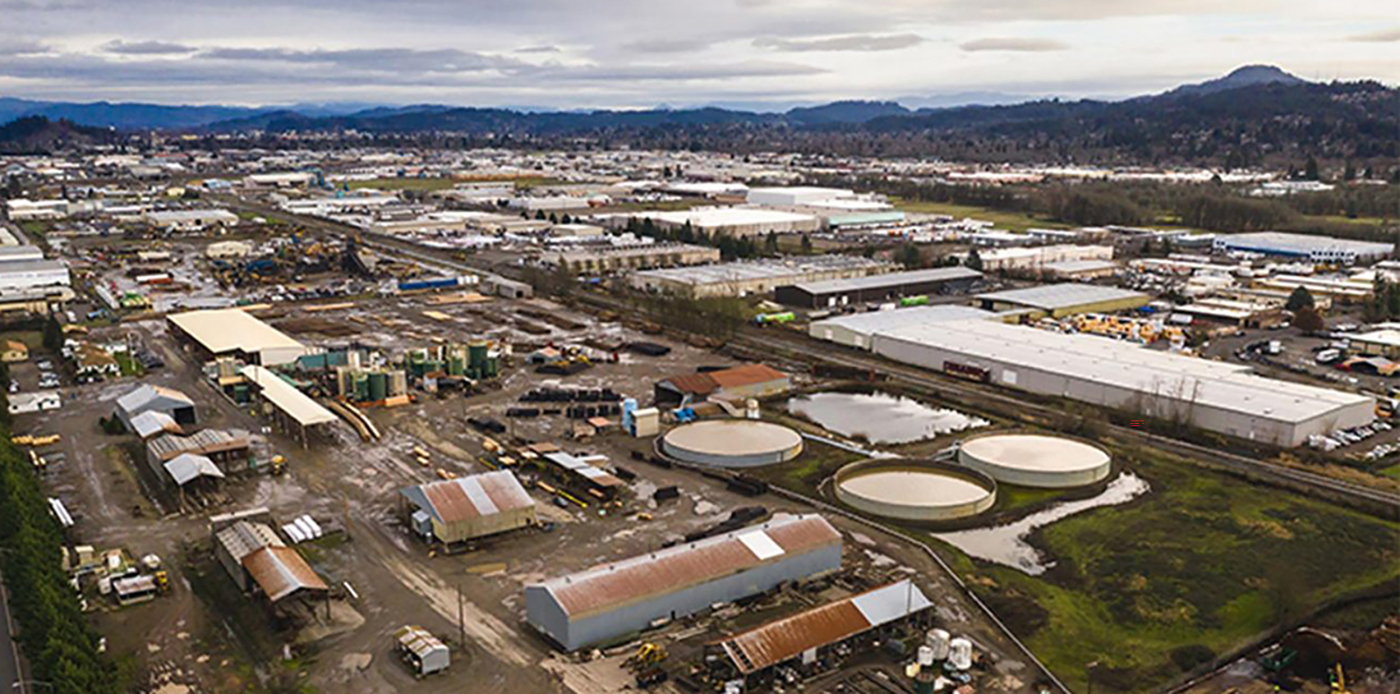
Aerial view of JH Baxter creosote factory in West Eugene.
When J.H. Baxter shut down in January 2022, the community heralded a new era of cleaner air and more livable neighborhoods. This creosote chemical company polluted both nearby communities and its own workers for seven decades. The day after the plant ceased operations, nearby neighbors could suddenly take in a breath of air without coughing, getting a headache or feeling nauseous.
Dishonorably, like the black tar stain of creosote, J.H. Baxter continues to leave its sticky, foul mark on its Bethel neighbors. Shielding itself from the consequences of intentional toxic chemical trespass is the company’s signature legacy.
J.H. Baxter takes advantage of our community in three major ways
POLLUTE
First, J.H. Baxter for years exposed residents to air polluted with a sinister cocktail of naphthalene, ammonia, methanol, acetaldehyde, and a much longer list of nasty chemicals. At the same time its Bethel factory contaminated groundwater with pentachlorophenol (a carcinogen) and soil with dioxin (a carcinogen). Both provoked above-average health problems that afflict many long-suffering residents.
DISPUTE
Secondly, J.H. Baxter violated environmental protection laws in full view of our federal and state agencies. Regulators knew that the company was a repeat, intentional polluter and declared it a Significant Non-Complier as far back as 2012. Sadly, nothing changed. As environmental violations mounted and grew in severity, J.H. Baxter employed the corporate tactic of dispute-and-delay to dissuade agencies from holding it to account and issuing appropriate civil penalties. The company is responsible for at least one Superfund site in California and hazardous chemicals spills in the Columbia River. Like a white-collar crime thriller on the big screen, this corporate tycoon took advantage of its wealth and political ties to silence workers and manipulate the system. These deceits enabled J.H. Baxter to emerge unscathed, time after time.
SCOOT
Finally, when cornered by indisputable revelations of dioxin in the soil of nearby neighborhoods, J.H. Baxter forced regulatory agencies to go to court, buying time and spending taxpayer dollars. J.H. Baxter employed this tactic again when it was fined $305,440 for egregious violations of hazardous waste and water quality laws from 2015 to this year. It used the courts to dispute evidence of violations and to protest civil fines. Beyond Toxics became a legal petitioner to represent community interests and make sure pollution victims’ experiences were considered. After dragging out the litigation for nearly a year, on July 14, J.H. Baxter signed a settlement agreement to pay the full $305,440 immediately. The agreement was used to resolve the enforcement actions by the DEQ.
Here’s where J.H. Baxter performs the evasive “scoot” maneuver, continuing its historical pattern of violating the community’s trust, signing documents in bad faith and skirting Oregon laws: The company refuses to pay their $305,440 debt, and appears have no intention of paying the fine even though they signed the settlement agreement.
Further, the company refuses to make any effort to pay for the dioxin cleanup of residential yards in Bethel neighborhoods that are now contaminated from years of negligent environmental violations.
PROFITS, LIKE ITS POLLUTION, UP IN THE AIR
Although the company has not declared bankruptcy, Company CEO Georgia Baxter claims that years of corporate profits simply vanished. Thankfully, the Oregon Department of Justice and the Oregon DEQ are scrupulously investigating how the State can recoup the money owed in civil penalties and the millions of dollars being spent on cleaning up the dioxin mess, both on the polluter’s property and in the yards of nearby Bethel residents.
However, DEQ’s options are murky under Oregon law. For example, the agency has been unable to recover even a penny from all the equipment and chemicals J.H. Baxter has sold off since it closed.
J. H. Baxter has figured out it can pollute, dispute and scoot – with impunity.
WE CAN LEARN FROM THIS
Eugene should not allow a similar toxic fiasco to happen again! Now is the time to stand up and demand polluter accountability. Beyond Toxics is working with City Councilors Claire Syrett and Randy Groves to design policies with the teeth to protect our communities. We residents of Eugene must mandate strong requirements to end chronic polluter malfeasance. Our legislature must give our regulatory agencies more tools to rein in chronic polluters.
Help us pass meaningful policies that build public health criteria in our zoning codes. Contact us to find out more about upcoming hearings on the Public Health Overlay Zone. Read our J.H. Baxter FAQ sheet. Your City Councilor needs to hear directly from you that Eugene must adopt solutions that will get our community on a clear path to end the dodgy cycle of pollute, dispute and scoot.
~ Lisa Arkin, Executive Director
See also: "Opinion: Eugene can prevent toxic fiascoes like J.H. Baxter's from happening again"
Lisa Arkin, publshed in the Eugene Register-Guard, Sept. 25, 2022
Read Register-Guard's most recent reporting on the J.H. Baxter issue
Winning the Battle to Ban Chlorpyrifos!
In 2020, Oregon became the 4th state to phase-out the organophosphate insecticide, chlorpyrifos. This law came about as a result of a 2-year legislative campaign led by Beyond Toxics to ban the use of chlorpyrifos. We fought for a complete ban, and we knew a phase-out was not enough.
Today we celebrate the EPA’s August 18th decision to END the use of chlorpyrifos on all food crops, a ban that will also apply to Oregon.
Lay Of The Land (Use)
“I’m from the coast.” “I own a farm.” “My family have been ranchers for five generations.” Our sense of ourselves is integrated with the way we own and use land.
Climat-o-cides
We face a future full of challenges about the health of our communities and the impacts of a warming climate. Of the many intersections between environmental justice, health and climate change, one that is often overlooked is pesticide use.
Stand to Protect Climate, People and Forests
Beyond Toxics does not shy away from tough issues. It takes time, tenacity and creativity to solve problems. For example, we are in our second year of fighting to stop the use of chlorpyrifos in Oregon. We’ve presented two bills that got caught up and swept away by the Republican walk-outs in 2019 and 2020. We followed that with a campaign for a chlorpyrifos phase-out that we expect to be adopted by the end of this year.
SB 1602 will make a difference for rural Oregonians sick of pesticide drift
When Allie McDermott and her partner heard the helicopter blades whirring early on a Sunday morning in March, they were stunned. As they ran up the road to see for themselves they thought, ‘There is no way an aerial spray could be happening on a Sunday!’




